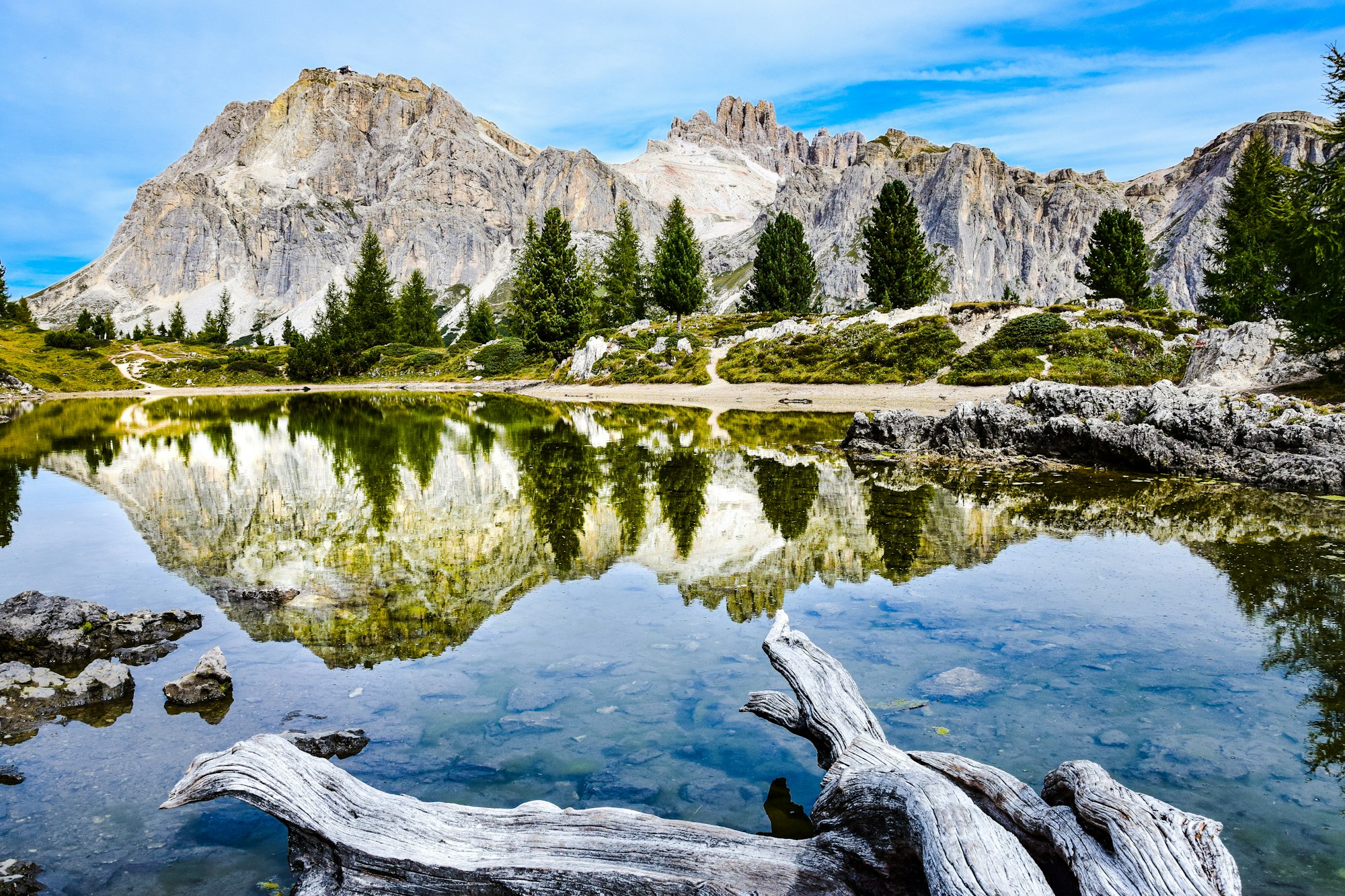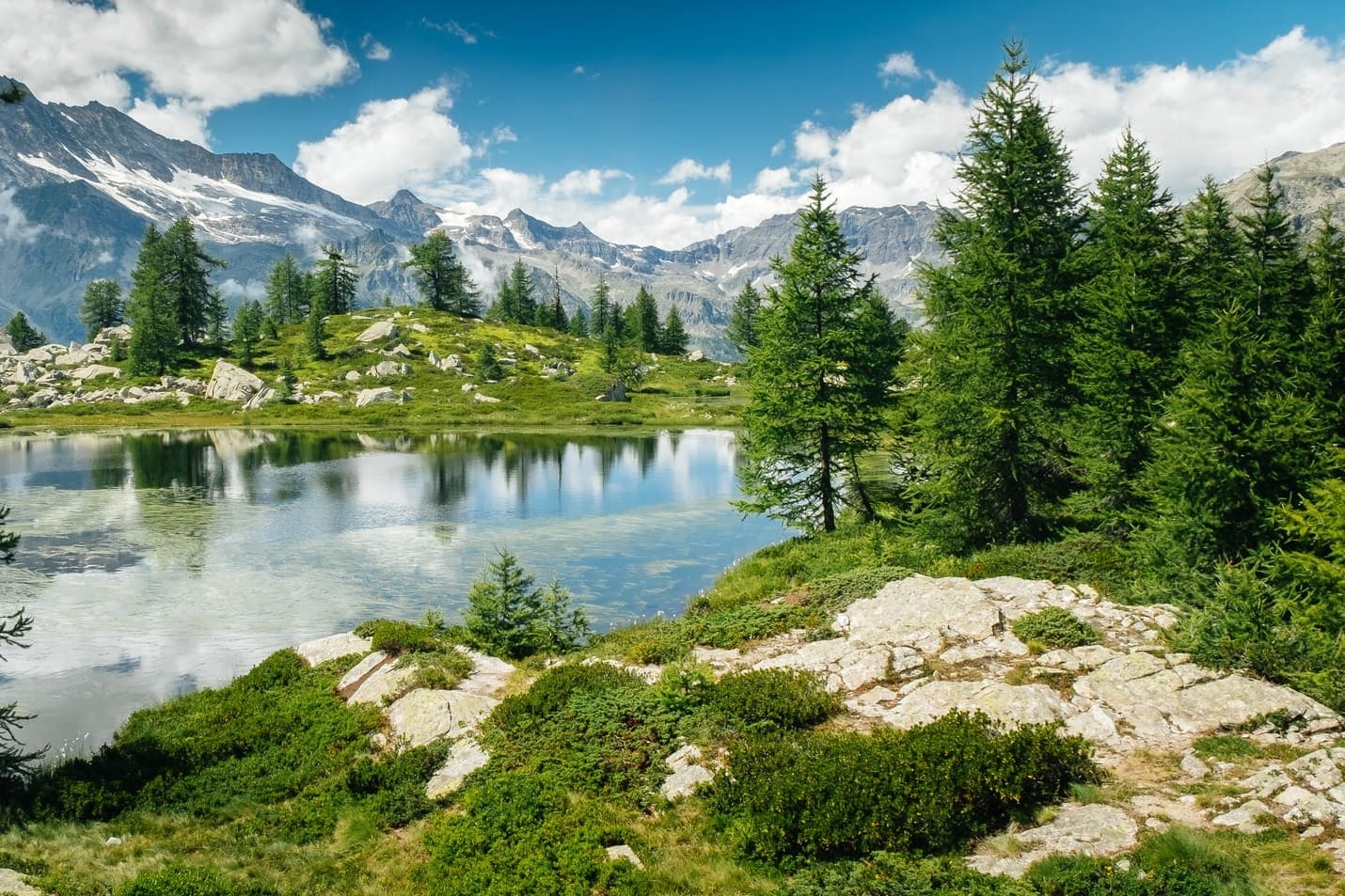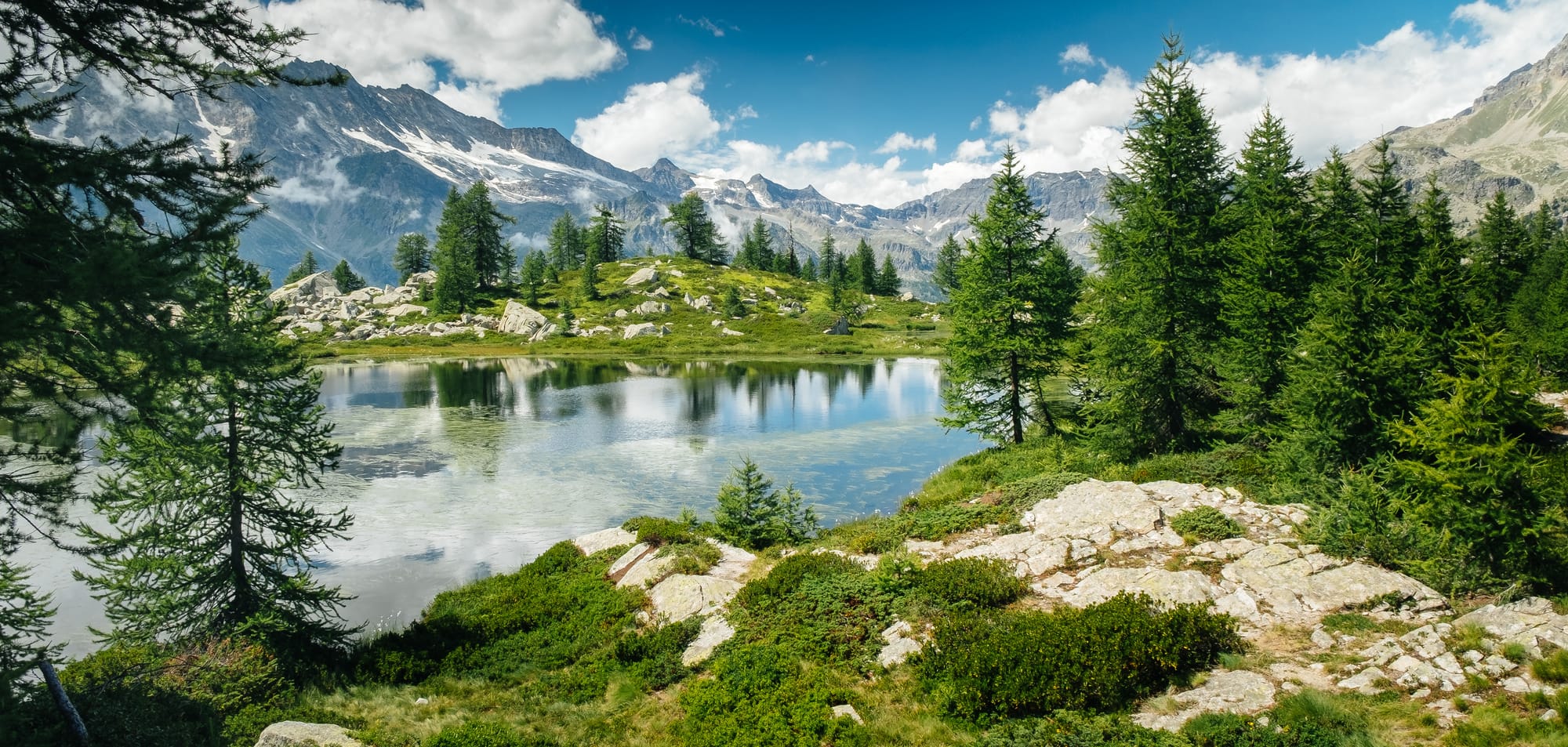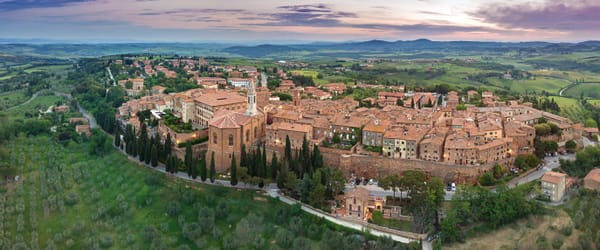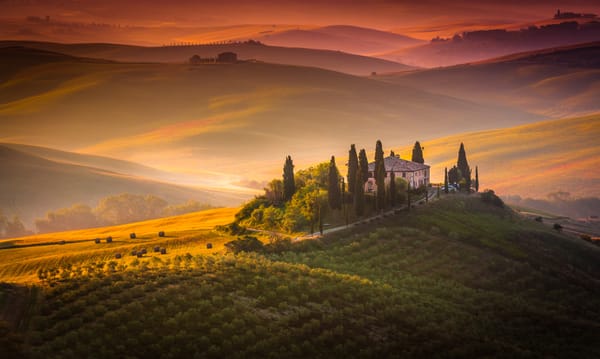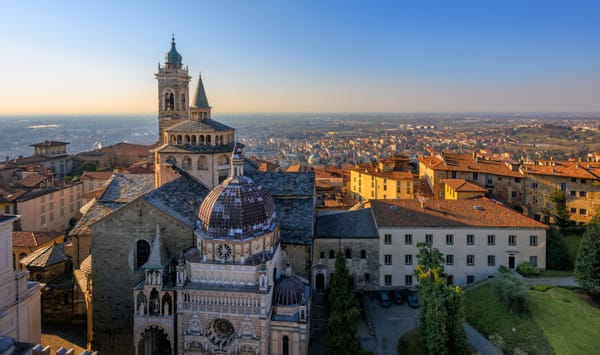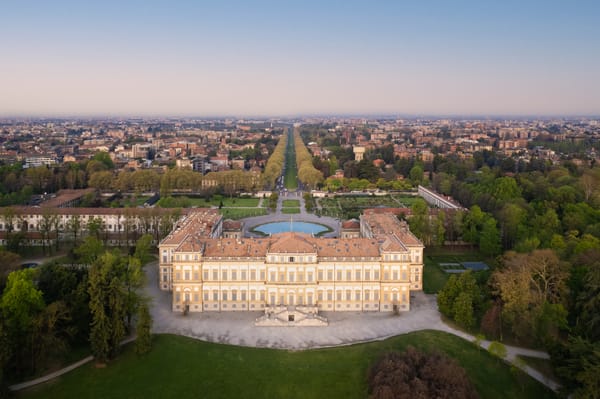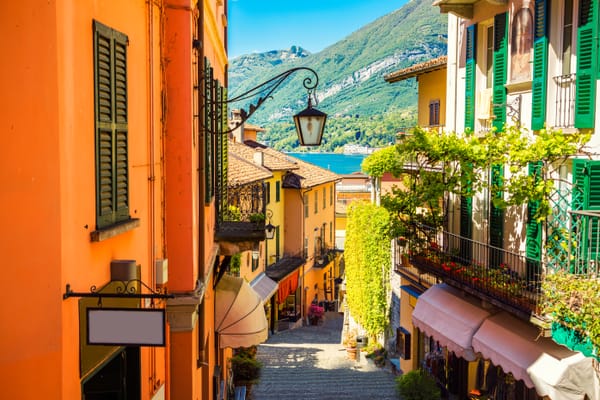When one imagines Italy, the mind inevitably wanders to the grandeur of the Colosseum, the winding canals of Venice, or the art-filled halls of the Uffizi Gallery. This is the celebrated Italy of history, art, and urban romance. But beyond these iconic cities and well-trodden paths lies another Italy, a land of raw, untamed beauty where nature reigns supreme. This is the wild heart of the nation, protected and preserved within its remarkable network of 25 National Parks.
For the traveler seeking to understand the soul of a country, exploring the diverse landscapes and nature in Italy is a necessity. The parks offer more than just wilderness; they are living museums safeguarding breathtaking biodiversity, centuries-old traditions, and authentic experiences.
This guide is the definitive resource for planning your outdoor travel in Italy.
Why you should explore the National Parks of Italy
Choosing to dedicate time to Italy's natural landscapes offers a journey that enriches any cultural tour. It provides context, solitude, and a powerful sense of place often lost in crowded cities. Here are the key reasons why these protected areas are a must-see.
1. Explore a mosaic of diverse landscapes
Italy's geography is famously varied, and its parks showcase this diversity in spectacular fashion. Within their boundaries, one can find everything from the jagged, pale peaks of the Dolomites, a UNESCO World Heritage site, and the ancient beech forests of the Apennines to the dramatic coastal cliffs of Puglia and the fertile volcanic slopes of Sicily. This variety ensures that every park offers a unique natural environment.
2. Discover a sanctuary for rare European wildlife
These parks are critical havens for some of Europe's most iconic species, offering incredible wildlife viewing opportunities. It is here that the Marsican brown bear roams freely in the Apennines, the majestic Alpine ibex clings to impossible cliffs, and Apennine wolves tread silently through ancient forests. For the patient observer, the rewards are immeasurable.
3. Experience authentic culture and local traditions
Unlike many wilderness-only parks, Italy's protected areas are almost always inhabited. They are dotted with ancient stone villages (borghi), remote monasteries, and agricultural landscapes shaped by millennia of human presence. This unique intersection of nature and culture offers a chance to experience deep-rooted local traditions and taste incredible hyperlocal cuisine found nowhere else.
4. Enjoy a paradise for outdoor activities
The opportunities for adventure are boundless. The parks are crisscrossed by thousands of miles of well-marked trails (sentieri) perfect for hiking, trekking, and mountain biking. Crystal-clear rivers offer chances for kayaking and rafting, while high-altitude plateaus become stunning arenas for snowshoeing and cross-country skiing in winter. It is an unparalleled setting for active exploration in Italy.
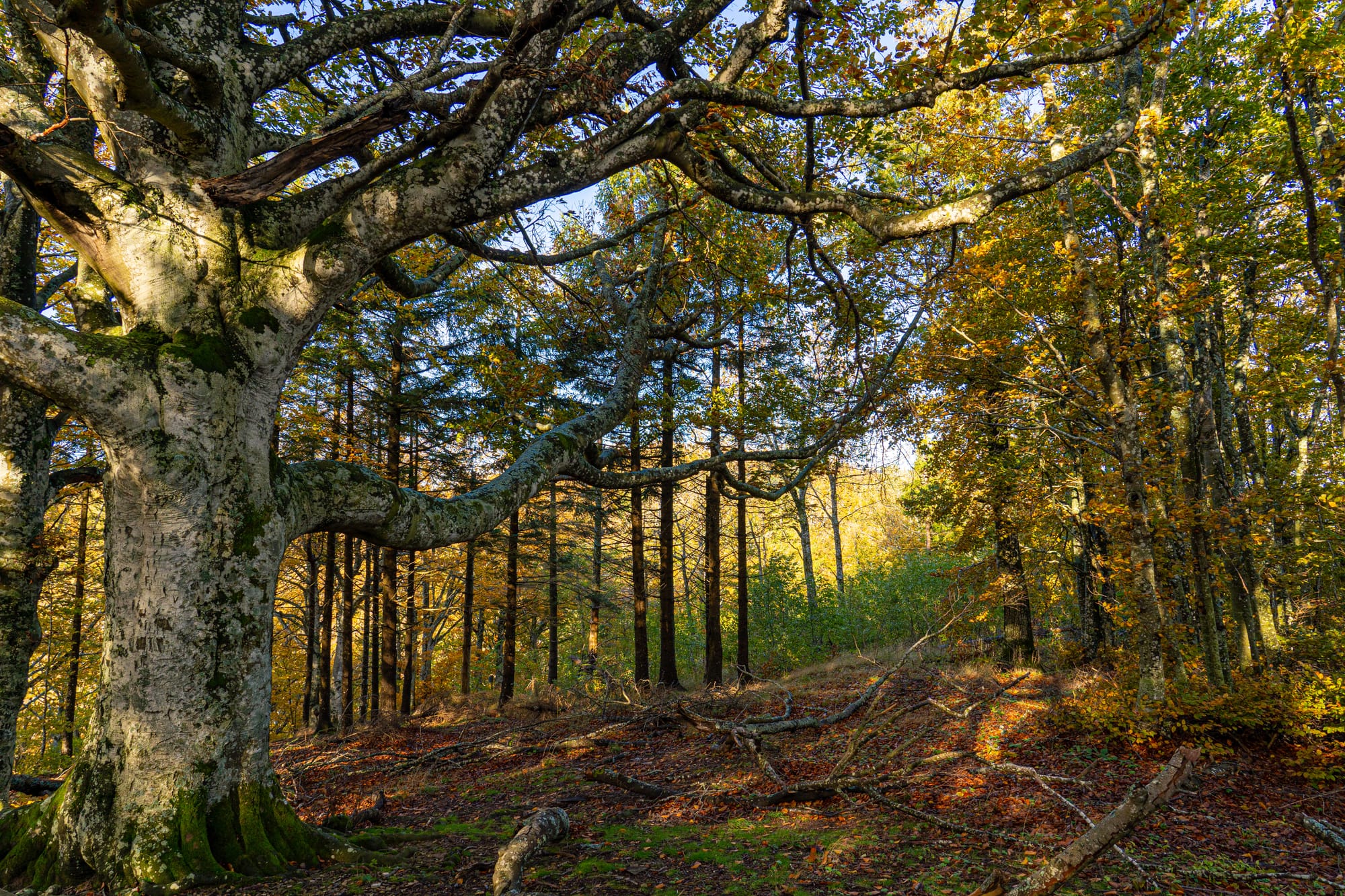
The complete list of Italy's 25 National Parks
Italy's commitment to conservation is showcased in its 25 official National Parks (parchi nazionali), a network protecting some of the most diverse landscapes in Europe. From the highest peaks of the Alps to pristine marine archipelagos, each park offers a unique window into the nation's natural and cultural heritage.
To help you navigate this incredible wealth, we have organized the complete list by geographical area.
Northern Italy
- Gran Paradiso National Park: Italy's first park, a high-alpine sanctuary for the iconic Alpine ibex.
- Val Grande National Park: the largest wilderness area in the Alps, offering a rugged and solitary trekking experience.
- Dolomiti Bellunesi National Park: home to the dramatic southern peaks of the UNESCO World HeritageDolomites.
- Stelvio National Park: a world of immense glaciers, legendary mountain passes, and WWI history.
- Cinque Terre National Park: a unique coastal park protecting iconic terraced vineyards and five seaside villages.
- Appennino Tosco-Emiliano National Park: a gentle Apennine ridge that forms the watershed between Tuscany and Emilia-Romagna.
- Foreste Casentinesi National Park: a realm of ancient, spiritual forests and remote monastic retreats.
- Portofino National Park: a protected coastal promontory offering stunning Mediterranean views and hiking trails.
Central Italy
- Monti Sibillini National Park: a land of mythic peaks, vast flowering plains, and legendary landscapes in Umbria and Marche.
- Gran Sasso and Monti della Laga National Park: home to the highest peaks of the Apennines and the vast "Little Tibet" plateau.
- Abruzzo, Lazio and Molise National Park: the historic wild heart of Italy, crucial for the conservation of the Marsican brown bear and wolf.
- Maiella National Park: a rugged mountain massif known as the "Mother Mountain" of Abruzzo, rich in hermitages and canyons.
- Circeo National Park: a rare example of preserved coastal dunes, wetlands, and lowland forest on the Lazio coast.
Southern Italy & Islands
- Gargano National Park: a "mountain on the sea" in Puglia, featuring dramatic limestone cliffs and the ancient Foresta Umbra.
- Alta Murgia National Park: a unique limestone plateau characterized by grassy steppe, rock churches, and the Castel del Monte.
- Vesuvius National Park: a protected area centered around the world's most famous active volcano, overlooking the Bay of Naples.
- Cilento, Vallo di Diano and Alburni National Park: a vast coastal and mountainous park in Campania, home to Greek ruins at Paestum.
- Pollino National Park: Italy's largest park, a wild and rugged landscape famed for the ancient Heldreich's pine (Pino Loricato).
- Sila National Park: a vast forested plateau in Calabria with ancient trees and tranquil lakes, known as the "Great Woods of Italy."
- Aspromonte National Park: the "harsh mountain" at the southern tip of mainland Italy, with dramatic gorges and coastal views.
- Arcipelago di La Maddalena National Park: a stunning Sardinian archipelago of granite islands and world-class turquoise waters.
- Asinara National Park: a Sardinian island with a unique history as a prison, now a sanctuary for rare wildlife, including albino donkeys.
- Tuscan Archipelago National Park: a collection of seven islands between Tuscany and Corsica, including Elba, with rich biodiversity.
- Gulf of Orosei and Gennargentu National Park: a wild Sardinian park where the island's highest mountains meet a rugged, inaccessible coastline.
- Pantelleria National Park: a volcanic "black pearl" island between Sicily and Africa, known for its unique landscapes and passito wine.
- Isola di Capraia National Park: a wild, volcanic island in the Tuscan Archipelago, a paradise for hikers and marine life enthusiasts.
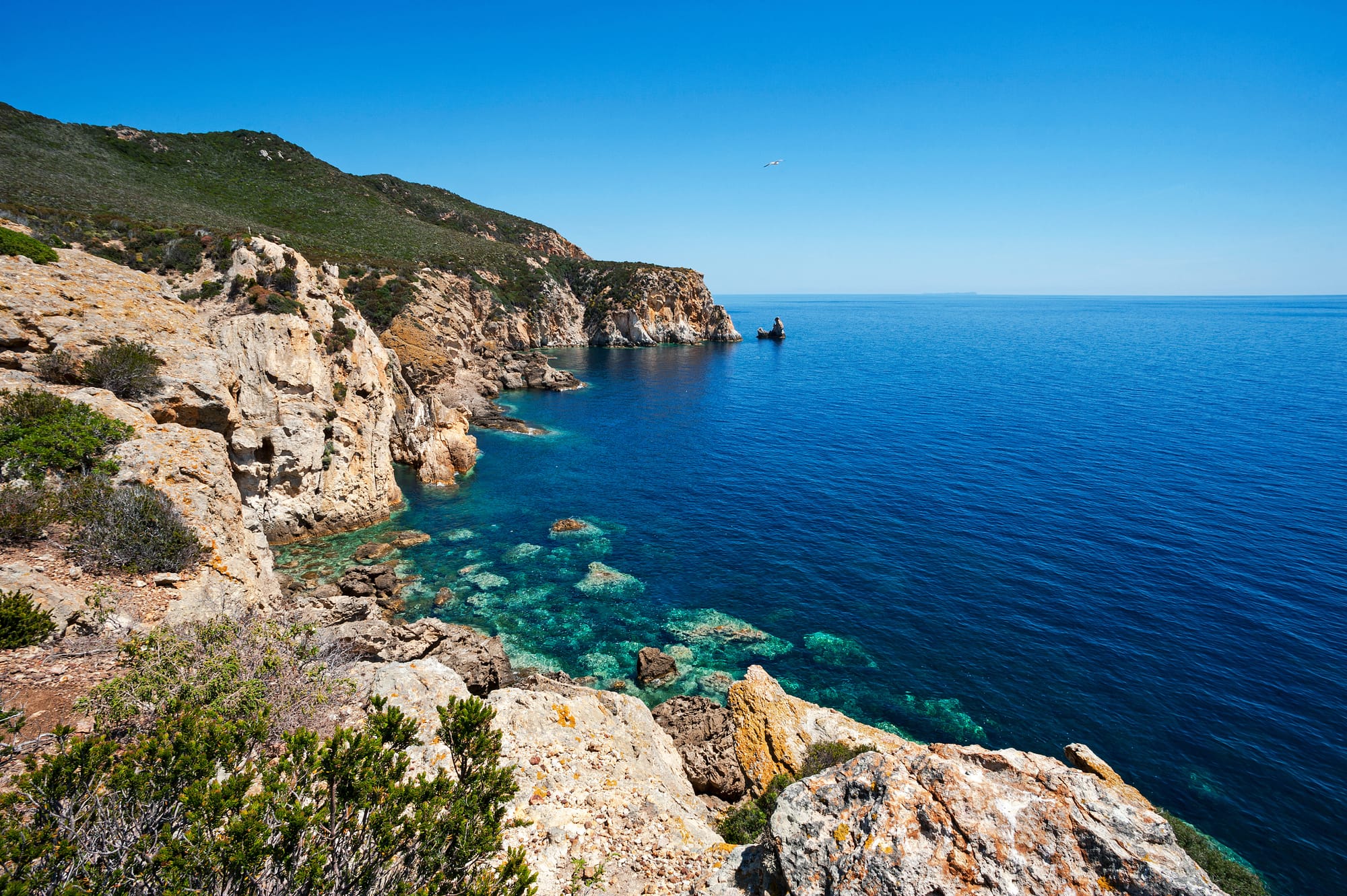
The 10 most beautiful National Parks in Italy
While every park possesses a unique charm, this curated selection highlights ten landscapes renowned for their iconic beauty, exceptional biodiversity, and the unforgettable experiences they offer the independent traveler.
1. Gran Paradiso National Park: a sanctuary for Alpine wildlife
- Best for: classic Alpine scenery, wildlife spotting, and high-altitude hiking.
- The experience: as Italy's first National Park, Gran Paradiso is the crown jewel of the Western Alps. It's a realm of soaring, glacier-carved peaks, vibrant green valleys, and the undisputed king of the mountains: the Alpine ibex. The park exudes a sense of pristine, protected nature, where charming stone-roofed villages are mere footnotes in a vast, wild narrative.
- Key highlights & activities:
- Spot the majestic Alpine ibex and chamois in their natural habitat.
- Hike to iconic alpine huts like the Rifugio Vittorio Emanuele II.
- Explore the distinct characters of the Cogne and Valsavarenche valleys.
- Planning your visit: June to September is ideal for hiking. A car is recommended to move between the park's main access valleys, easily reached from Turin or Aosta.
2. Stelvio National Park: glaciers, high passes & WWI history
- Best for: high-altitude driving, vast glacial landscapes, and WWI history.
- The experience: Stelvio is a park of superlatives, home to the impressive glaciers of the Ortler-Cevedale group and the legendary Stelvio Pass. This is a raw, high-altitude environment where the scars of the "White War" (WWI) are still visible. The culture here is a fascinating blend of Italian and Germanic traditions.
- Key highlights & activities:
- Drive or cycle the iconic Stelvio Pass road, one of the world's most famous routes.
- Hike the breathtaking Forni Glacier trail for up-close views of the ice.
- Explore the preserved trenches and fortifications of the WWI front lines.
- Planning your visit: the Stelvio Pass is open from late May/early June to October. The park is a paradise for summer hiking and spring ski mountaineering.
3. Dolomiti Bellunesi National Park: dramatic landscapes of a UNESCO site
- Best for: dramatic, world-renowned mountain landscapes and geology.
- The experience: part of the Dolomites UNESCO site, this park protects the range's wilder, southern ramparts. The landscape is one of profound verticality, where sheer walls of pale rock ignite in hues of pink and orange at sunset (enrosadira). It offers a more rugged and solitary experience than the more famous Dolomite areas to the north.
- Key highlights & activities:
- Trek sections of the challenging Alta Via 1 and 2 long-distance trails.
- Marvel at the emerald erosion pools of Cadini del Brenton.
- Discover the park's exceptional and rare botanical diversity.
- Planning your visit: late spring through early fall is best. The terrain is demanding, making it suitable for experienced mountain hikers. Belluno is the main gateway city.
4. Foreste Casentinesi National Park: ancient forests and spiritual retreats
- Best for: ancient forests, spiritual retreats, and tranquil hiking.
- The experience: to walk here is to step into a fairy tale. This park protects some of Europe's oldest forests, a place of deep silence and spiritual resonance. Its ancient beech forests are a UNESCO World Heritage site, and the atmosphere is one of profound tranquility, punctuated by the presence of historic monasteries.
- Key highlights & activities:
- Visit the powerfully spiritual monasteries of La Verna and Camaldoli.
- Hike to the source of the Arno River on Monte Falterona.
- Immerse yourself in the autumn foliage, among the most spectacular in Italy.
- Planning your visit: accessible year-round, but autumn is magical. A car provides the most flexibility for reaching trailheads and the secluded monasteries.
5. Monti Sibillini National Park: mythical landscapes and springtime blooms
- Best for: legendary landscapes, springtime blooms, and medieval lore.
- The experience: the "Sibilline Mountains" are steeped in myth, once believed to be home to the oracle Sibyl. The landscape reflects this magic, with dramatic limestone peaks and the beautiful glacial lake, Lago di Pilato. The park is a testament to resilience, recovering from the 2016 earthquake.
- Key highlights & activities:
- Witness the "Fiorita," the spectacular mass flowering on the plains of Castelluccio di Norcia (late May to early July).
- Hike the challenging trail to the legendary Lago di Pilato.
- Explore the dramatic Gola dell'Infernaccio gorge.
- Planning your visit: spring for the wildflowers and autumn for crisp hiking are perfect. Always check the official park website for the status of roads and trails.
6. Gran Sasso e Monti della Laga National Park: the "Little Tibet" of Italy
- Best for: vast plateaus, the highest peaks of the Apennines, and cinematic scenery.
- The experience: this park is home to the Corno Grande, the highest peak in the Apennines, and the Calderone, Europe's southernmost glacier. Its defining feature is the Campo Imperatore, a massive high-altitude plateau so vast it's nicknamed "Little Tibet" and has served as a backdrop for numerous films.
- Key highlights & activities:
- Drive or hike across the breathtaking Campo Imperatore plateau.
- Visit the stunning medieval fortress of Rocca Calascio, one of Italy's most iconic castles.
- Explore the charming, preserved stone village of Santo Stefano di Sessanio.
- Planning your visit: summer and early autumn provide the best access to the high peaks. The park is a vast territory, and a car is essential for exploration.
7. Circeo National Park: coastal biodiversity at Rome's doorstep
- Best for: coastal biodiversity, unique history, and proximity to Rome.
- The experience: Circeo is unique, a rare example of a coastal plain and wetland ecosystem preserved just a short distance from a major metropolis. It encompasses diverse environments: coastal dunes, a lowland forest, wetlands, and the dramatic limestone promontory of Mount Circeo.
- Key highlights & activities:
- Explore the pristine coastal dunes and Sabaudia beach.
- Hike on the Mount Circeo promontory for stunning sea views.
- Go birdwatching in the coastal lakes, a vital stopover point for migratory birds.
- Planning your visit: an excellent year-round destination. It can be visited as a day trip from Rome, but staying longer allows for a deeper appreciation of its ecosystems.
8. Gargano National Park: a rugged coastline and ancient inland forests
- Best for: dramatic white cliffs, ancient forests, and sea caves.
- The experience: known as the "spur" of Italy's boot, the Gargano promontory is a "mountain on the sea." The park protects a stunning coastline of towering white limestone cliffs and sea stacks (faraglioni). Inland, it preserves the Foresta Umbra, a mysterious, ancient forest that feels a world away from the sunny coast.
- Key highlights & activities:
- Take a boat tour from Vieste or Peschici to discover the spectacular sea caves.
- Hike in the cool shade of the ancient Foresta Umbra.
- Visit the charming coastal towns and the pilgrimage site of Monte Sant'Angelo.
- Planning your visit: late spring and early autumn offer the best balance of good weather and fewer crowds. A car is necessary to explore both the coast and the forest interior.
9. Pollino National Park: ancient trees and rugged wilderness
- Best for: ancient trees, rugged wilderness, and authentic southern Italian culture.
- The experience: as Italy's largest National Park, Pollino is a vast and rugged territory in the southern Apennines. The park's symbol is the magnificent Heldreich's pine (Pino Loricato), a prehistoric species whose wind-sculpted forms are living monuments to resilience.
- Key highlights & activities:
- Hike on high ridges to see the iconic, ancient Pini Loricati.
- Go rafting or canyoning in the dramatic Lao River gorges.
- Explore the unique villages of Albanian origin (Arbëreshë).
- Planning your visit: a car is essential. Summer is best for high-altitude hiking, while spring offers lush green landscapes for lower-altitude treks.
10. Arcipelago di La Maddalena National Park: a paradise of turquoise waters
- Best for: world-class beaches, turquoise waters, and island hopping.
- The experience: this geomarine park protects a stunning archipelago of over 60 islands off the northeast coast of Sardinia. The landscape is shaped by wind and sea, with spectacular granite rock formations and beaches with impossibly fine sand. The water clarity and shades of blue are simply breathtaking.
- Key highlights & activities:
- Explore the islands by boat, the best way to access secluded coves.
- Visit the famous "Pink Beach" (Spiaggia Rosa) on Budelli island (viewing from a distance is required).
- Swim in the natural pools of Piscine Naturali between the islands.
- Planning your visit: May, June, and September offer a superb experience with fewer boats and pleasant temperatures. The main town and gateway is La Maddalena.
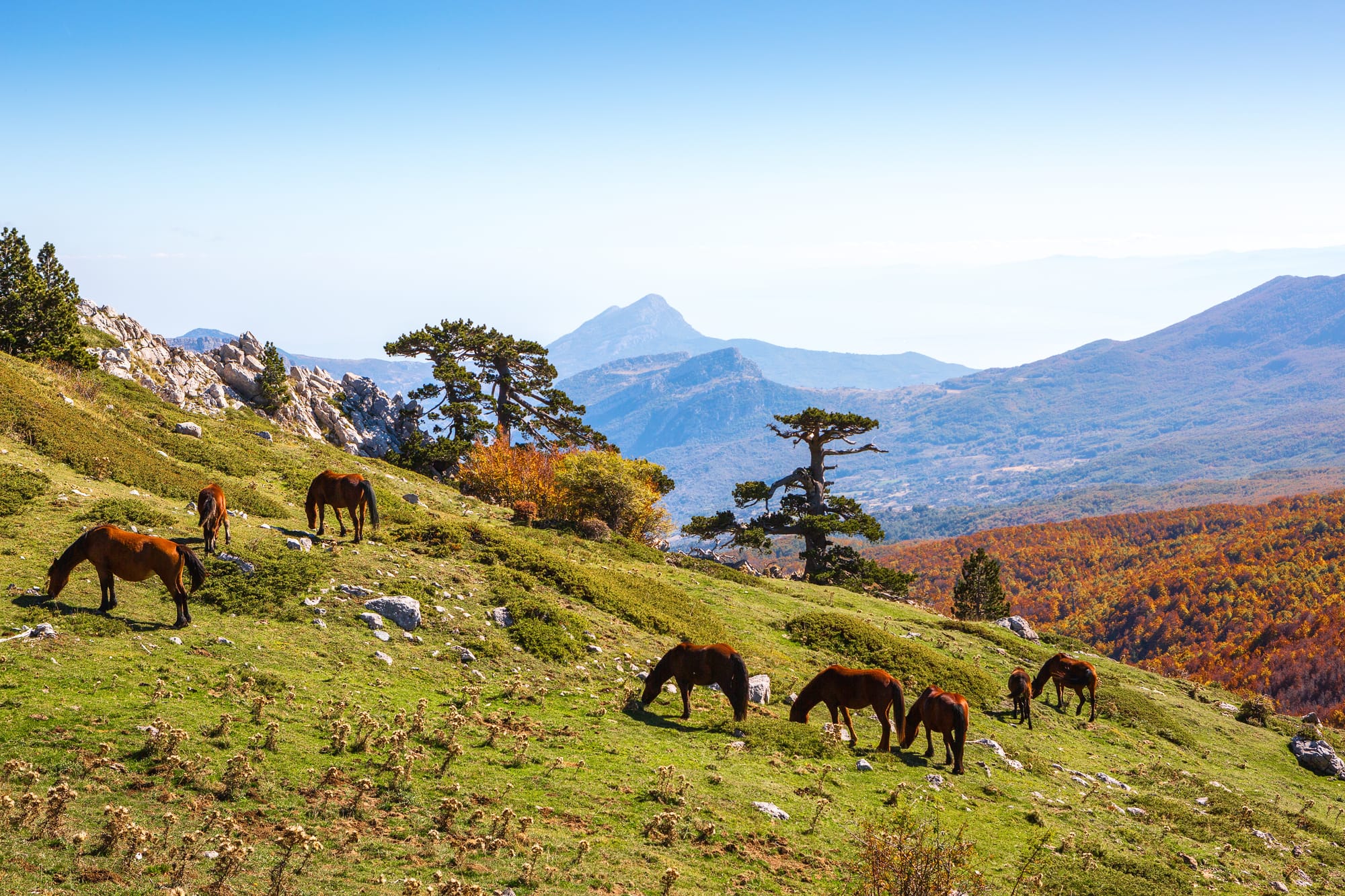
Planning your trip: FAQs about Italy's National Parks
To help you plan your authentic journey into Italy's natural landscapes, here are answers to some of the most frequently asked questions from discerning travelers.
1. Is a guided tour necessary, or can I explore the parks independently?
For the most part, Italy's National Parks are exceptionally well-suited for independent exploration. The trail networks (sentieri) are generally well-marked by the Club Alpino Italiano (CAI), and visitor centers (centri visita) provide excellent maps and advice.
However, a local guide can be invaluable for specific experiences, such as:
- Wildlife watching in parks like Abruzzo or Pollino.
- Navigating complex, off-trail alpine routes in the Dolomites.
- Understanding the deep history of WWI sites in Stelvio National Park.
For the independent planner, a guide is not a necessity but a strategic choice for enhancing certain aspects of your journey.
2. How can I best experience the local culture and cuisine within the parks?
The key is to focus on the small, inhabited villages (borghi) within or on the edge of the parks. To find authentic food, avoid larger tourist restaurants and seek out:
- Local trattorie and osterie for traditional, family-run meals.
- Agriturismi (farm stays) for meals made with ingredients grown on-site.
Always ask for the local specialty, which might be polenta in Gran Paradiso, lentil soup in Monti Sibillini, or fresh seafood in the Gargano. Visiting local food markets and staying in family-run guesthouses provides the most direct connection to the park's human element.
3. What are the advantages of visiting in the shoulder seasons (spring and autumn)?
These seasons are often superior to the peak summer months. They offer a more solitary, authentic experience with far fewer crowds and distinct natural advantages.
- Spring (May-June): The landscape bursts with life. You'll find wildflowers in full bloom, waterfalls at their most powerful, and a better chance to spot newborn animals.
- Autumn (September-October): This season brings a dramatic transformation. The forests of the Apennines erupt in spectacular colors, the air is crisp and ideal for hiking, and the light is softer and more photogenic.
4. Can I create an itinerary that combines national parks with classic cultural cities?
Absolutely. This is one of the great strengths of traveling in Italy. The key is strategic planning, and a rental car is almost always essential for the flexibility it provides. For example:
- Tuscany: Combine visits to Florence and Siena with a few days of tranquil hiking in the Foreste Casentinesi National Park.
- Rome: A journey to the capital can be wonderfully complemented by day trips to the coastal ecosystems of Circeo or the wild mountains of Gran Sasso.
This approach allows for a seamless transition between urban cultural hubs and remote natural trailheads, creating a well-rounded itinerary.
5. What is the 'rifugio' system in the Italian Alps and how does it work?
The rifugio (mountain hut) is a cornerstone of Italian mountain culture. These huts, often in spectacular locations, provide lodging and meals for hikers, enabling multi-day, hut-to-hut treks into areas unreachable in a single day.
Key points to remember:
- Reservations are essential, especially in July and August. These can often be made online or by phone, sometimes through the local CAI website.
- Facilities range from basic bivouacs to large, full-service lodges with private rooms and restaurants.
- Staying in a rifugio offers an unforgettable experience of camaraderie and deep immersion in the high mountains.
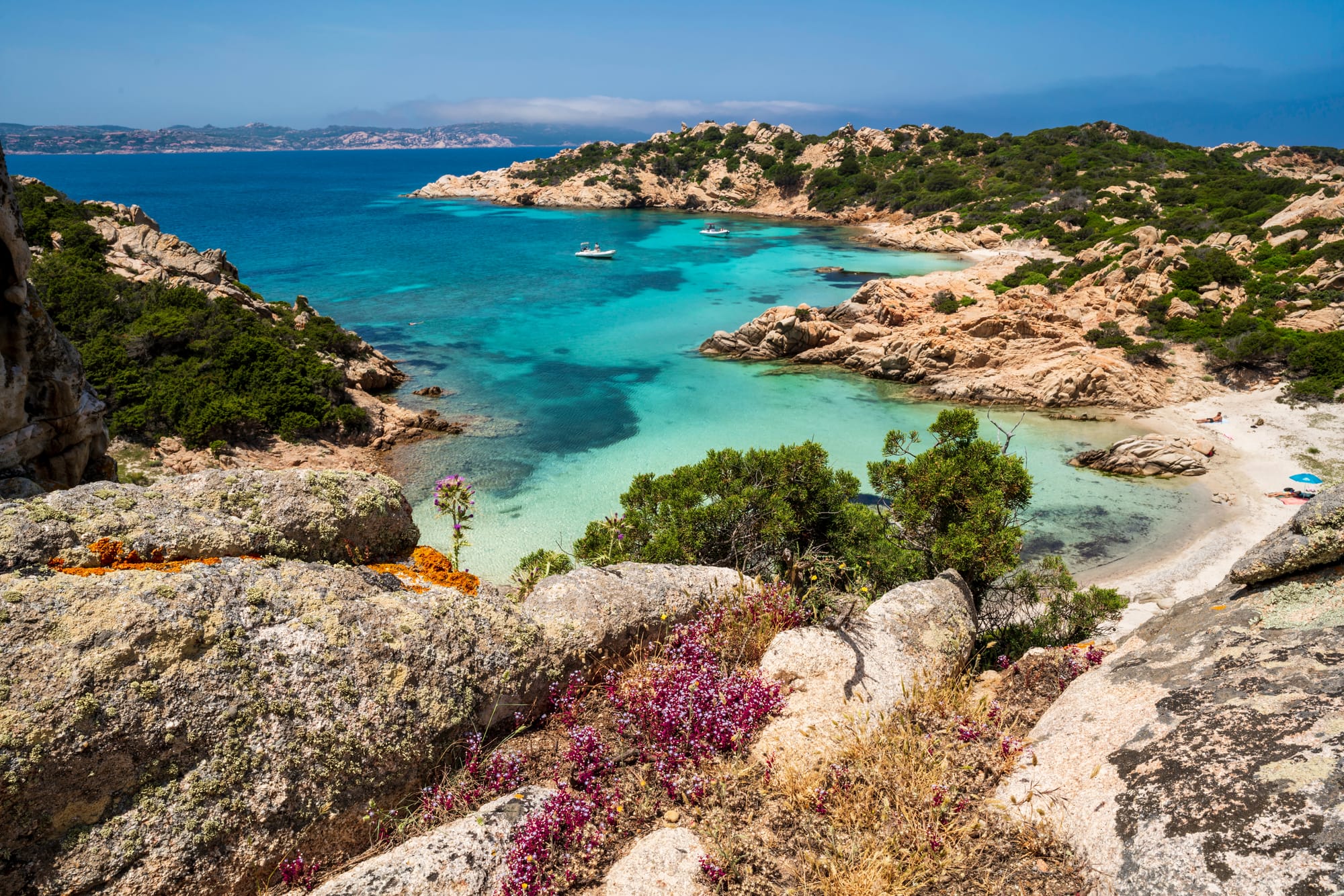
Finding the authentic soul of Italy in its National Parks
To explore Italy's National Parks is to discover the country's enduring, wild soul. It is an act of peeling back the layers of celebrated history to reveal the very foundation upon which that history was built: the land itself. These protected landscapes are not separate from the Italian story; they are the story, containing the roots of its culture, the origins of its cuisine, and the source of its deepest myths.
Venturing into these spaces offers more than just beautiful scenery; it provides a different rhythm for travel—one that is slower, more deliberate, and more profound. It is an invitation to witness the silent resilience of a thousand-year-old pine, to feel the shared history in a medieval mountain village, and to understand that the true masterpiece of Italy is the living, breathing landscape.
Here, in the silence of an ancient forest or on a windswept coastal path, one can find the most authentic Italy of all. The path has been laid out. Your journey into the wild heart of Italy awaits.
Inspired to plan your journey? Find everything you need at:
- The ultimate guide to the Dolomites
- The ultimate guide to the Cinque Terre
- The ultimate guide to Milan
- The ultimate guide to Florence
- The essential guide to Tuscany
Explore Italy like a local with our in-depth guides.

